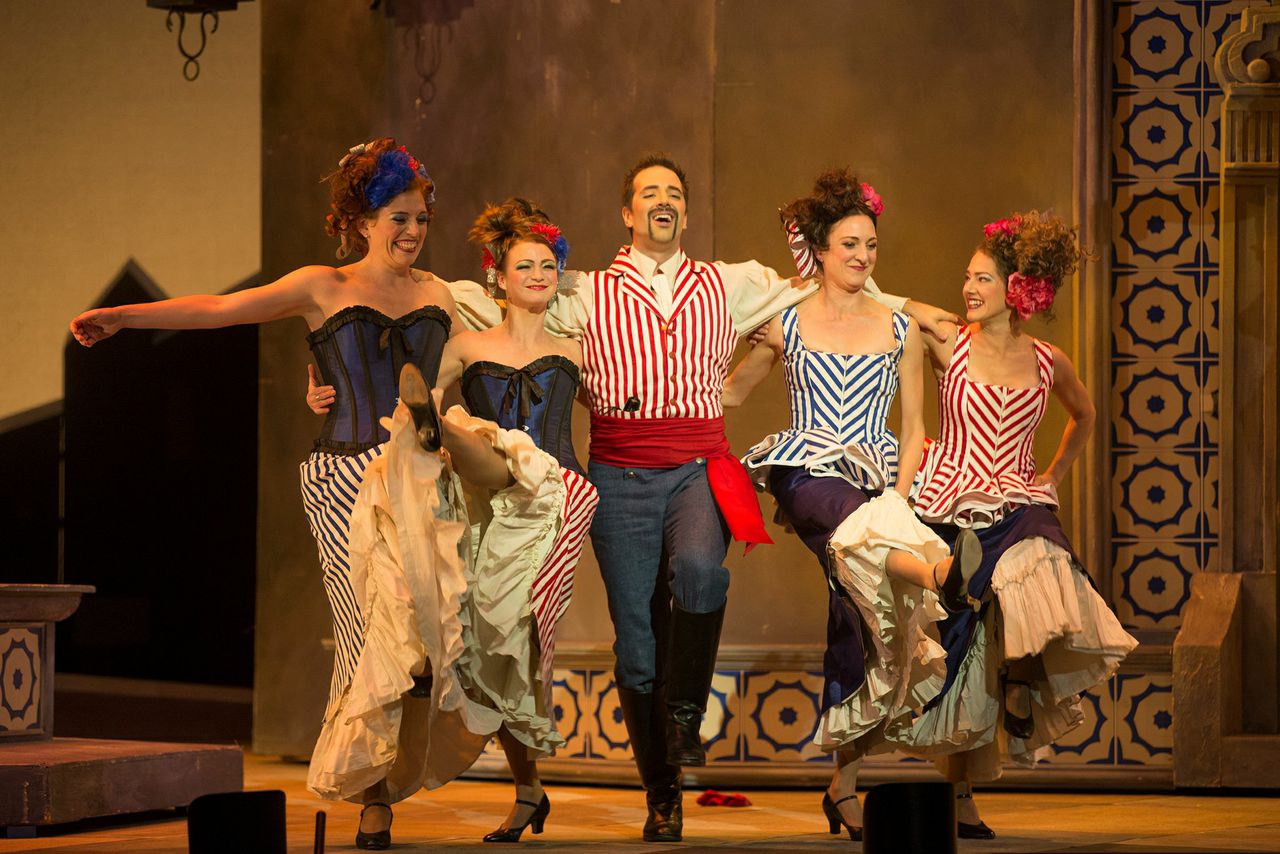Opéra de Montreal presents Oriol Tomas’ version of the emblematic The Barber of Seville
Are you thinking about finally shaving your hipster beard? Opéra de Montreal may have the perfect barber for you.
Opéra de Montréal and Oriol Tomas’ version of The Barber of Seville, one of the most famous creations of comedy in music, was premiered to Montrealers on Saturday, Nov. 8 at the Place des Arts.
The 19th century Italian composer Gioachino Rossini is known to be a self-taught prodigy who began to compose at a very young age. When he was just 23 years old, he went on to create one of the most emblematic opere buffe, or commedie in musica, in just 13 days: The Barber of Seville, an opera that remains an indisputable and universally admired masterpiece, a pillar of his repertoire.
Even though almost 200 years have passed since this flamboyant creation was first performed in Rome’s Teatro Argentina on Feb. 20, 1816, it still falls into the typical realism style, so that the plot is perceived by the modern public as actual and not as anachronistic, like one might think at first.
The Barber of Seville tells the story of a love triangle in 17th century Spain, focusing on the fierce attempt of the lover Count Almaviva, faithfully portrayed by Romanian tenor Bogdan Mihai, to marry the beautiful Rosina, exceptionally sung by Spanish mezzo-soprano Carol Garcia. However, their love cannot easily achieve fulfillment because her guardian, Dr. Bartolo, sung by the full voice of Italian bass Carlo Lepore, opposes it, pushed by his desire to accelerate his own marriage with her. A character who acts like the guardian angel of the two lovers is Figaro, the famous eponymous barber, who uses his qualities as a clever merchant to save them.
To speak of the devil, Figaro unexpectedly made his entrance from the middle of the audience, giving insight into Tomas’ intention to bring the audience as close as possible to his creation not only metaphorically, but in a physical way as well. Arriving on the stage, the Canadian baritone Étienne Dupuis debuted with the well-known “Largo al factotum,” one of the most difficult baritone arias to perform due to the demanding rhythm and the allegro vivace tempo, in addition to the need of a high vocal range, thus setting the tone of the show.
As far as the acting capabilities of the performers are concerned, it was clear that Tomas’ version fell right into the last two decades’ trends of modern opera. The singers were more and more physically solicitous, constantly moving along the stage. In the past, emphasis was placed only on the vocal performance of the singers, which confined them to limited movements.
Quebec’s artistic capabilities impressed again with an appropriate use of technology to reproduce the setting of the story. The décor was beautifully created with the help of today’s visual technology. It was composed of a typical Spanish house that covered the whole stage, and that could be seen only from the exterior at the beginning of the show. The setting stayed fixed, but as the audience was further immersed in the story, the house opened, revealing its interior and ultimately the intimate life of the characters. Other interesting aspects of the décor brought more depth to the story, like the cages specifically displayed to portray the helpless situation of Rosina in her oppression.
The audience seemed to be delighted by the show on the premiere and showed their appreciation with applause after each scene. I was also personally witness to a continuously laughing lady that made me feel, from time to time, like she was watching a comedy at the cinema. This also made me ask myself if the story, the funny moments, and the eye-catching lights took precedence over the artists’ performance and the stage director’s talent.
The show concluded in a positive note, crowned by a flurry of balloons, thus ending Tomas’ exuberant and colourful version of The Barber of Seville.
Opera de Montréal’s The Barber of Seville runs until Nov. 17, at the Place des Arts’ Salle Wilfrid-Pelletier.
